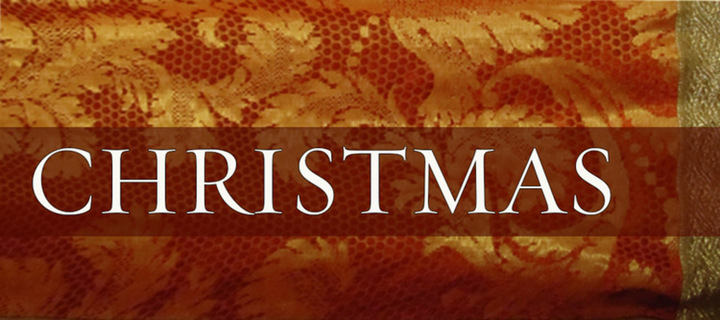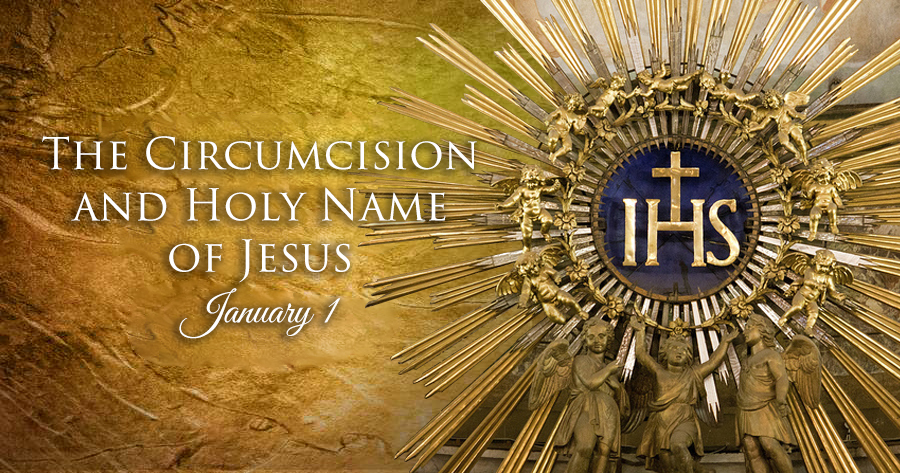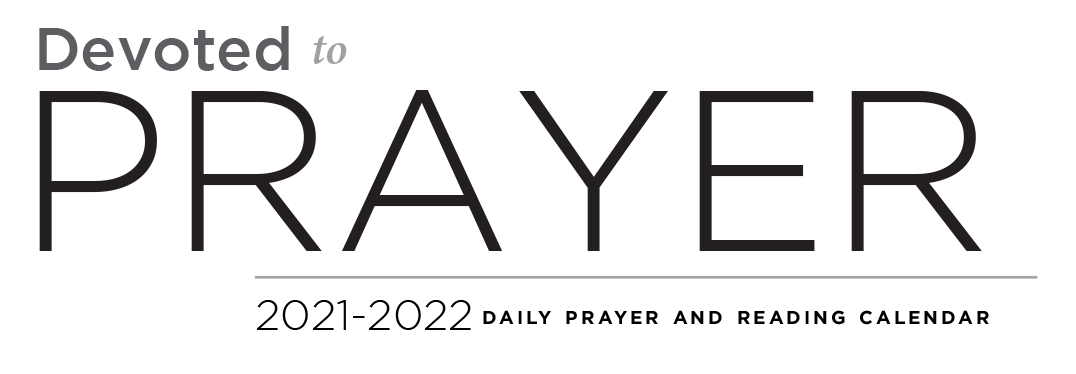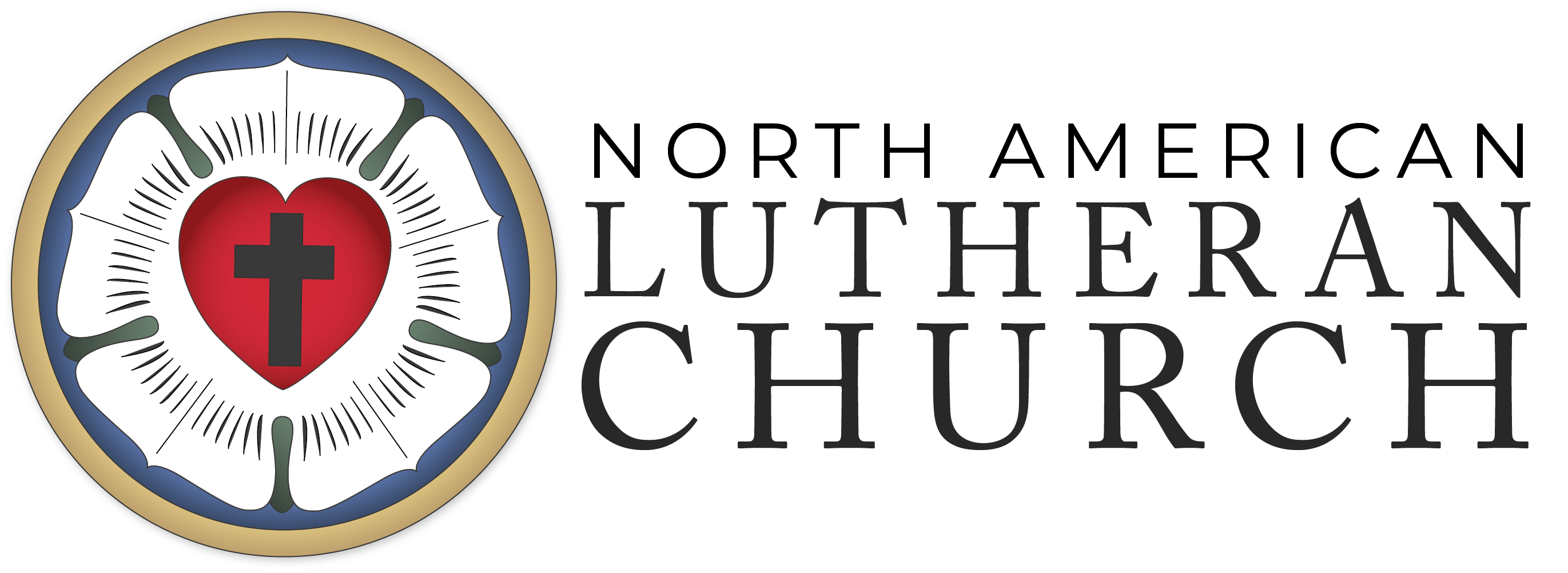
Genesis 17:1–12 (Listen)
Abraham and the Covenant of Circumcision
17:1 When Abram was ninety-nine years old the LORD appeared to Abram and said to him, “I am God Almighty; walk before me, and be blameless, 2 that I may make my covenant between me and you, and may multiply you greatly.” 3 Then Abram fell on his face. And God said to him, 4 “Behold, my covenant is with you, and you shall be the father of a multitude of nations. 5 No longer shall your name be called Abram, but your name shall be Abraham, for I have made you the father of a multitude of nations. 6 I will make you exceedingly fruitful, and I will make you into nations, and kings shall come from you. 7 And I will establish my covenant between me and you and your offspring after you throughout their generations for an everlasting covenant, to be God to you and to your offspring after you. 8 And I will give to you and to your offspring after you the land of your sojournings, all the land of Canaan, for an everlasting possession, and I will be their God.”
9 And God said to Abraham, “As for you, you shall keep my covenant, you and your offspring after you throughout their generations. 10 This is my covenant, which you shall keep, between me and you and your offspring after you: Every male among you shall be circumcised. 11 You shall be circumcised in the flesh of your foreskins, and it shall be a sign of the covenant between me and you. 12 He who is eight days old among you shall be circumcised. Every male throughout your generations, whether born in your house or bought with your money from any foreigner who is not of your offspring,
Genesis 17:15–16 (Listen)
Isaac’s Birth Promised
15 And God said to Abraham, “As for Sarai your wife, you shall not call her name Sarai, but Sarah shall be her name. 16 I will bless her, and moreover, I will give you a son by her. I will bless her, and she shall become nations; kings of peoples shall come from her.”
Colossians 2:6–12 (Listen)
Alive in Christ
6 Therefore, as you received Christ Jesus the Lord, so walk in him, 7 rooted and built up in him and established in the faith, just as you were taught, abounding in thanksgiving.
8 See to it that no one takes you captive by philosophy and empty deceit, according to human tradition, according to the elemental spirits of the world, and not according to Christ. 9 For in him the whole fullness of deity dwells bodily, 10 and you have been filled in him, who is the head of all rule and authority. 11 In him also you were circumcised with a circumcision made without hands, by putting off the body of the flesh, by the circumcision of Christ, 12 having been buried with him in baptism, in which you were also raised with him through faith in the powerful working of God, who raised him from the dead.
John 16:23–30 (Listen)
23 In that day you will ask nothing of me. Truly, truly, I say to you, whatever you ask of the Father in my name, he will give it to you. 24 Until now you have asked nothing in my name. Ask, and you will receive, that your joy may be full.
I Have Overcome the World
25 “I have said these things to you in figures of speech. The hour is coming when I will no longer speak to you in figures of speech but will tell you plainly about the Father. 26 In that day you will ask in my name, and I do not say to you that I will ask the Father on your behalf; 27 for the Father himself loves you, because you have loved me and have believed that I came from God. 28 I came from the Father and have come into the world, and now I am leaving the world and going to the Father.”
29 His disciples said, “Ah, now you are speaking plainly and not using figurative speech! 30 Now we know that you know all things and do not need anyone to question you; this is why we believe that you came from God.”
Morning Psalms
Psalm 98 (Listen)
Make a Joyful Noise to the Lord
A Psalm.
98:1 Oh sing to the LORD a new song,
for he has done marvelous things!
His right hand and his holy arm
have worked salvation for him.
2 The LORD has made known his salvation;
he has revealed his righteousness in the sight of the nations.
3 He has remembered his steadfast love and faithfulness
to the house of Israel.
All the ends of the earth have seen
the salvation of our God.
4 Make a joyful noise to the LORD, all the earth;
break forth into joyous song and sing praises!
5 Sing praises to the LORD with the lyre,
with the lyre and the sound of melody!
6 With trumpets and the sound of the horn
make a joyful noise before the King, the LORD!
7 Let the sea roar, and all that fills it;
the world and those who dwell in it!
8 Let the rivers clap their hands;
let the hills sing for joy together
9 before the LORD, for he comes
to judge the earth.
He will judge the world with righteousness,
and the peoples with equity.
Psalm 148 (Listen)
Praise the Name of the Lord
148:1 Praise the LORD!
Praise the LORD from the heavens;
praise him in the heights!
2 Praise him, all his angels;
praise him, all his hosts!
3 Praise him, sun and moon,
praise him, all you shining stars!
4 Praise him, you highest heavens,
and you waters above the heavens!
5 Let them praise the name of the LORD!
For he commanded and they were created.
6 And he established them forever and ever;
he gave a decree, and it shall not pass away.
7 Praise the LORD from the earth,
you great sea creatures and all deeps,
8 fire and hail, snow and mist,
stormy wind fulfilling his word!
9 Mountains and all hills,
fruit trees and all cedars!
10 Beasts and all livestock,
creeping things and flying birds!
11 Kings of the earth and all peoples,
princes and all rulers of the earth!
12 Young men and maidens together,
old men and children!
13 Let them praise the name of the LORD,
for his name alone is exalted;
his majesty is above earth and heaven.
14 He has raised up a horn for his people,
praise for all his saints,
for the people of Israel who are near to him.
Praise the LORD!
Evening Psalms
Psalm 99 (Listen)
The Lord Our God Is Holy
99:1 The LORD reigns; let the peoples tremble!
He sits enthroned upon the cherubim; let the earth quake!
2 The LORD is great in Zion;
he is exalted over all the peoples.
3 Let them praise your great and awesome name!
Holy is he!
4 The King in his might loves justice.
You have established equity;
you have executed justice
and righteousness in Jacob.
5 Exalt the LORD our God;
worship at his footstool!
Holy is he!
6 Moses and Aaron were among his priests,
Samuel also was among those who called upon his name.
They called to the LORD, and he answered them.
7 In the pillar of the cloud he spoke to them;
they kept his testimonies
and the statute that he gave them.
8 O LORD our God, you answered them;
you were a forgiving God to them,
but an avenger of their wrongdoings.
9 Exalt the LORD our God,
and worship at his holy mountain;
for the LORD our God is holy!
Psalm 8 (Listen)
How Majestic Is Your Name
To the choirmaster: according to The Gittith. A Psalm of David.
8:1 O LORD, our Lord,
how majestic is your name in all the earth!
You have set your glory above the heavens.
2 Out of the mouth of babies and infants,
you have established strength because of your foes,
to still the enemy and the avenger.
3 When I look at your heavens, the work of your fingers,
the moon and the stars, which you have set in place,
4 what is man that you are mindful of him,
and the son of man that you care for him?
5 Yet you have made him a little lower than the heavenly beings
and crowned him with glory and honor.
6 You have given him dominion over the works of your hands;
you have put all things under his feet,
7 all sheep and oxen,
and also the beasts of the field,
8 the birds of the heavens, and the fish of the sea,
whatever passes along the paths of the seas.
9 O LORD, our Lord,
how majestic is your name in all the earth!
The Circumcision and Holy Name of Jesus (January 1)

About the Festival
From the sixth century of the Christian era, March 25, the Annunciation, was understood as the beginning of the Incarnation and the inauguration of the new age (see Dante, Paradiso 16:34-39) and was accepted throughout much of Christendom as the beginning of the year. In Germany, however, the year began with Christmas; in France and the Low Countries it began with Easter; the Orthodox Church, reflecting Jewish practice as it frequently does, begins the new church year on September 1.
The names of the months September, October, November, and December (seventh, eighth, ninth, tenth) preserve the prehistoric Roman practice of observing March 1 as New Year’s Day; September is the seventh month counting from the first month of March. March 1 was also the beginning of the year among the Franks until the eighth century, and also among the Turks and the Russians.
There was, nonetheless, an old and persistent tradition that recognized January 1 as New Year’s Day. In 153 B.C.E. the Roman consuls entered office on January 1, the beginning of the month immediately following the winter solstice, indicating that that date was being accepted by the Roman Empire as the beginning of the year. When Julius Caesar reorganized the Roman calendar in 46 B.C.E., the beginning of the year was set on January 1, and it was celebrated by the “saturnalia.”
The observance of January 1 as New Year’s Day was increasingly frequent from the thirteenth century under the influence of Roman law and later humanism, in France in 1563, in Scotland in 1600, in Russia in 1700. In 1582 Gregory XIII reformed the calendar and set the beginning of the year on January 1. The adoption of the Gregorian date spread slowly. It was not accepted in England and the American colonies until 1752.
In the pagan world New Year’s Day was a celebration in honor of Janus, the god who faces two directions, and the celebration was a time of widespread revelry and license. For some centuries, therefore, the Christian church gave no liturgical notice to the day whatever. “I see you have come here,” St. Augustine is reported to have said to the crowds in church on January 1, “as if we had a feast today.” When the church noted the day at all, it was kept as a day of fasting and penitence. Several early missals provided a mass for use on January 1 against idolatrous practices. “During these days when they revel,” Augustine declared, “we observe a fast in order to pray for them,” church attendance being seen as an antidote to participation in pagan revels. In a sermon for this day (no. 198), Augustine said, “Let them get drunk; you should fast. Let them rush to the theater; you should rush to church.” (Watch Night services on New Year’s Eve, popular especially among Methodists, are a modern equivalent.) The Second Council of Tours (567) prescribed penitential devotions modeled on the Lenten fast for the first three days of January in an effort to eliminate pagan practice. In the year 633, the Fourth Council of Toledo in Spain prescribed a strict fast and abstinence for January 1, and it became a day of such solemnity that “Alleluia” was omitted from the liturgy as it was during Lent. Throughout the church in these centuries there were repeated prohibitions against participation by Christians in the revels of the new year. The continued repetition of the prohibitions indicates that although the church opposed the celebration, the people continued their revels.
In the seventh century, however, probably under Pope Boniface IX (615), January 1 was made a church holiday, called simply “the Octave of the Lord,” the title in the Gelasian and Gregorian sacramentaries, in imitation of the eighth day of Easter and of the Epiphany. Since the celebration of the new year could not be suppressed, the church did as it has often done and transformed the pagan holiday into a church festival. The appointed place (the “station”) of the pope’s mass that day was the church of the St. Mary beyond the Tiber, the oldest church dedicated to the mother of the Lord; and so the day became connected with Mary, and the old Roman calendars call the day “The Feast of St. Mary.” It is in a sense, therefore, the oldest feast of Mary in the Western Church. celebrated on the eighth day after the birth of her Son. The Roman Catholic calendar echoes this ancient name and calls the day “Octave of Christmas: the Solemnity of Mary, the Mother of God.”
The celebration of Jesus’ circumcision on the eighth day after his birth began about the middle of the sixth century particularly in Gaul but also in Spain. The celebration is not mentioned in the Eastern Church before the eighth century; it became established in Rome after the ninth century. This newer commemoration soon overshadowed the Octave of Christmas and came to be combined with the Octave in the title of the day: “The Circumcision of Our Lord and the Octave of the Nativity.” In the middle ages, the day also came to be associated with devotion to the Holy Name of Jesus, since the one-verse Gospel for the eighth day of Christmas, Luke 2:21, reported both the circumcision and the giving of the divinely chosen Name. In the fifteenth century John of Capistrano, Bernardine of Siena, and the Franciscans worked to spread the cult of the Holy Name of Jesus. In 1530 the Franciscan Order received permission to celebrate the Name of Jesus as a separate festival on January 14. The observance spread, and in 1721 Pope Innocent XIII fixed the Feast of the Holy Name on the Second Sunday after the Epiphany; in 1913 Pius X assigned the festival to the Sunday between January 1 and 6, or on January 2 if no Sunday occurred. That practice is now suppressed in the Roman Church, and propers are provided for a votive mass of the Holy Name which may be celebrated whenever convenient. Certain Eastern rites kept the celebration of the Holy Name on January 1. In late medieval practice in England, shown in the later forms of the Sarum rite, the feast of the Holy Name was observed on August 7, a day that still appears on certain Anglican calendars as “St. Saviour” (that is, the holy Savior), because in Hebrew the name Jesus means “savior,” as the angel explained to Joseph (Matt. 1:21).
In previous Anglican Prayer Books January 1 is called simply “The Circumcision of Christ”; in the 1979 Prayer Book the day is given a new designation, “The Holy Name of Our Lord Jesus Christ.” There had been objection in some quarters to the former title and particularly to the former collect, which, reflection St. Paul’s teaching in Romans 2:29, asked for “the true circumcision of the Spirit,” since the focus seemed to be on circumcision itself rather than circumcision as an event in the life of Christ. (See F. E. Brightman, quoted in Massey Shepherd, Oxford American Prayer Book Commentary, [Oxford, 1950], 105-06.) In Christian devotion, circumcision as a rite of purification is taken to be a symbol of baptism, and the first bloodshed by Christ for the cleansing of his people. (In the church in Ethiopia, circumcision is performed between the third and eighth day after birth, before the child is baptized.)
Lutheran calendars retained the medieval association of the Circumcision and the Name of Jesus because of their biblical basis, and so the title reads in most Lutheran service books (for instance, The Church Book of 1868, The Common Service Book of 1918, The Lutheran Hymnal of 1941, the Service Book and Hymnal of 1958, the Lutheran Service Book of 2006). The Lutheran Book of Worship (1978), followed by Evangelical Lutheran Worship (2006), borrowed the name of the day in the American the Book of Common Prayer (the Holy Name of Jesus) and gives it in a simplified form: “The Name of Jesus.”
The office hymns for the Feast of the Holy Name derive from a long poem ascribed to Bernard of Clairvaux, Jesu dulcis memoria, and are still sung in English as “Jesus, the very thought of thee,” “O Jesus, king most wonderful.” and “Jesus, thou joy of loving hearts.” The fifteenth-century hymn Gloriosi salvatoris, translated by John Mason Neale and others as “To the Name of our salvation,” sung to the stirring tune Oriel, makes clear that devotion to the holy Name is devotion to Jesus, the Name being a synonym for Jesus himself, who for long generations lay hidden in God’s foreknowledge but now has been revealed to the world. The long-held secret, now made public, in our time can be boldly sung aloud. (The splendid hymn is an explication of Ephesians 3.)
Excerpts from New Book of Festivals & Commemorations: A Proposed Common Calendar of Saints by Philip H. Pfatteicher, copyright, 2008 by Fortress Press, an imprint of Augsburg Fortress.
See also: Holy Name of Jesus
Reading
From Worship by Evelyn Underhill
Eastern Catholicism…has…a technique…of a simple and beautiful kind, for the production and deepening of that simple, inclusive, and continuous act of communion with God, that humble prayer of the heart, which is the substance of its mystical worship. This technique, so simple that it is within the compass of the humblest worshipper, yet so penetrating that it can introduce those who use it faithfully to the deepest mysteries of the contemplative life, consists in the unremitting inward repetition of the Holy Name of God; usually in the form of the so-called “Jesus prayer”—“Lord Jesus Christ, Son of God, have mercy upon me’.” This prayer has a unique place in the spiritual life of Orthodoxy. All monastic rules of devotion, and spiritual direction given by monks to the pious laity, aim at its development. It carries the simple and childlike appeal of the devout peasant, and the continuous self-acting aspiration of the great contemplative.
It can, when needful, replace the Divine Office and all other prayers; for it is of universal validity. The power of this prayer does not reside in its content, which is simple and clear (it is the prayer of the publican) but in the holy Name of Jesus. The ascetics testify that in this Name there resides the power of the Presence of God. Not only is God invoked in it, but He is already present in the invocation…thus the Name of Jesus present in the human heart communicates to it the power of that deification which the Redeemer has bestowed on us.…The light of the Name of Jesus pours through the heart, to irradiate the universe, a foretaste of that final transfiguration in which God shall be all in all.
Excerpts from Worship by Evelyn Underhill, copyright, 1936 by Harper & Brothers. Reprinted by permission of HarperCollins Publishers and Hodder & Stoughton.
Propers
Eternal Father, you gave to your incarnate Son the holy Name of Jesus to be a sign of our salvation: Plant in every heart, we pray, the love of him who is the Savior of the world, our Lord Jesus Christ, who lives and reigns with you and the Holy Spirit, one God, in glory everlasting.
Cambridge Bede Book, 1936; rev. 1979, BCP; rev. in LBW, ELW.
Readings: Numbers 6:22-27 [RCL] or Exodus 34:1-8; Psalm 8; Galatians 4:4-7 [RCL] or Philippians 2:9-13; Luke 2:15-21
Hymn of the Day: “To the Name of our salvation” (H82 248, 249; CSB 36); “O Jesus, joy of loving hearts” (LBW 356, ELW 658)
Prayers: For a deeper devotion to our Lord and a greater reliance on his saving power; For the cleansing of God’s people from sin; For reverence for the holy name of Jesus; For God’s blessing on the new year.
Preface: Christmas/Incarnation
Color: White
Also on January 1
New Year’s Day as such has no liturgical significance, but the church’s continuing struggle to keep the celebration of the secular new year out of its own distinctive year, the first day of which is the First Sunday in Advent, has proved to be futile. In Germany after the Reformation the new year was given a certain liturgical recognition (see Bach’s Christmas Oratorio). In North America the 1868 Lutheran Church Book provided a collect for the New Year translated from the 1695 Ober-Lausitz Agenda, which itself derived from the Austrian order of 1571:
Almighty and everlasting God, from whom cometh down every good and perfect gift: We give thanks for all thy benefits, temporal and spiritual, bestowed upon us in the year past, and we beseech thee of thy goodness, grant us a favorable and joyful year, defend us from all dangers and adversities, and send upon us the fullness of thy blessing; through thy Son Jesus Christ our Lord, who liveth and reigneth with thee and the Holy Ghost, one God, world without end.
The collect was continued in the 1918 Common Service Book, the 1941 Lutheran Hymnal, and the 1958 Service Book and Hymnal. The 1928 Proposed English Book of Common Prayer provided a similar collect for the new year. The present Roman Sacramentary provides for a mass At the Beginning of the New Year. The Lutheran Book of Worship (1978), the Lutheran Service Book (2006), and Evangelical Lutheran Worship (2006) all provide propers for New Year’s Eve, but these are not listed under the church year but rather under “Occasions.”

This daily prayer and Bible reading guide, Devoted to Prayer (based on Acts 2:42), was conceived and prepared by the Rev. Andrew S. Ames Fuller, director of communications for the North American Lutheran Church (NALC). After a challenging year in the midst of the COVID-19 pandemic, we have been provided with a unique opportunity to revitalize the ancient practice of daily prayer and Scripture reading in our homes. While the Reading the Word of God three-year lectionary provided a much-needed and refreshing calendar for our congregations to engage in Scripture reading, this calendar includes a missing component of daily devotion: prayer. This guide is to provide the average layperson and pastor with the simple tools for sorting through the busyness of their lives and reclaiming an act of daily discipleship with their Lord. The daily readings follow the Lutheran Book of Worship two-year daily lectionary, which reflect the church calendar closely. The commemorations are adapted from Philip H. Pfatteicher’s New Book of Festivals and Commemorations, a proposed common calendar of the saints that builds from the Lutheran Book of Worship, but includes saints from many of those churches in ecumenical conversation with the NALC. The introductory portion is adapted from Christ Church (Plano)’s Pray Daily. Our hope is that this calendar and guide will provide new life for congregations learning and re-learning to pray in the midst of a difficult and changing world.
